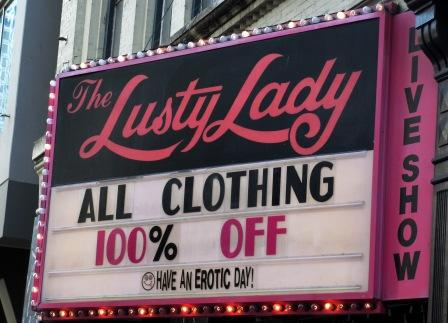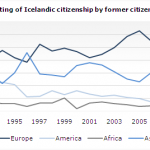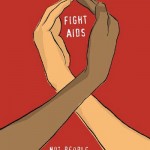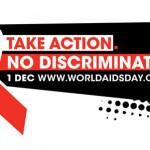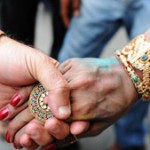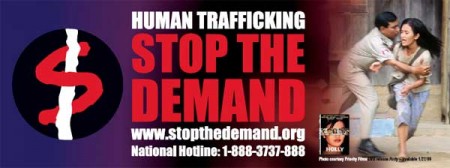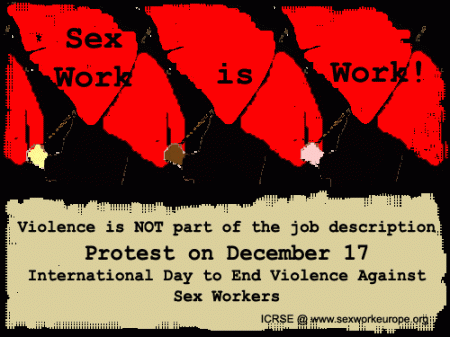 For the past 7 years, December 17th has been recognized by sex workers and their allies as a day to recognize that violence against sex workers is endemic to many societies. It is also a day to commit energy toward making the cultural and working conditions of sex work safer. This is very different from simply telling people not to be sex workers (Imagine criminalizing the mining industry and jailing miners as a way to protect them; imagine how much more dangerous the mining industry would be if there were no health and safety regulations in place). The work of making any cultural and work environment safer for all is to recognize the right of individuals to be agents over their own bodies, to achieve personal livelihood, and to live a life free of terror.
For the past 7 years, December 17th has been recognized by sex workers and their allies as a day to recognize that violence against sex workers is endemic to many societies. It is also a day to commit energy toward making the cultural and working conditions of sex work safer. This is very different from simply telling people not to be sex workers (Imagine criminalizing the mining industry and jailing miners as a way to protect them; imagine how much more dangerous the mining industry would be if there were no health and safety regulations in place). The work of making any cultural and work environment safer for all is to recognize the right of individuals to be agents over their own bodies, to achieve personal livelihood, and to live a life free of terror.
This work, on a larger scale, also entails the recognition of the potential social value of sex work. This does not mean that all sex workers love their job, any more than all miners love theirs; what it does mean is that it is not enough to listen only to the tragic stories (reaffirming the notion that people involved in this work must be punished), while covering ones eyes and ears to other stories (which suggest that the work is not intrinsically dangerous, evil, or otherwise worthy of punishment). As academics, policy makers, and citizens we don’t have to personally become providers or consumers of sex work (or the mining industry) to have compassion. But we must take seriously people’s claims that they, their families, and their communities can benefit economically or socially from their work, and ask what it is that we can do to make their work safer.
This year’s Dec. 17 vigils, at least in the US, will be tinged with a new sense of urgency given the recent discovery of 4 bodies in Long Island, some or all of whom were women sex workers. (See NBC news link here). Targeted violence on this scale is a form of war, of terrorism, of outright hatred for a particular category of people. Can you imagine the media and political response if the bodies were of children, or of politicians, or a particular ethnic or religious group?
Today, and all this week, a number of progressive media outlets are featuring stories about the importance of Dec. 17 anti-violence vigils. Rh Reality Check is featuring a series of stories, one of which I’m reposting in full below: “Treating Violence Against Sex Workers as a Hate Crime” By Rosie Campbell and Shelly Stoop. (Other links also provided at the end of this article).
—————–
Treating Violence Against Sex Workers as a Hate Crime
By Rosie Campbell and Shelly Stoops
December 16, 2010 – 6:40pm
Published under: Women’s Rights | End Violence Against Sex Workers Day 2010 | England | Prostitution | sex work
Rosie Campbell and Shelly Stoops’s blog | Printer-friendly version | Login or register to post comments | ShareThis
This article is part of a series published by RH Reality Check in partnership with the Global Network of Sex Work Projects (NSWP) to commemorate the International Day to End Violence Against Sex Workers, December 17th, 2010. It is excerpted from Research For Sex Work 12, published 17 December 2010 by the NSWP, an organization that upholds the voice of sex workers globally and connects regional networks advocating for the rights of female, male, and transgender sex workers. Download the full journal, with eight more articles about sex work and violence, for free at nswp.org. See all articles in this series here.
Over the last decade sex work projects, the police and other agencies in Liverpool (United Kingdom) have been addressing violence against sex workers, encouraging reporting and taking crimes committed against sex workers seriously. In recent years Armistead Street, a sex work outreach and support project in Liverpool, has worked with Merseyside Police to continue to build on this legacy. This partnership has led to unprecedented increases in the number of street sex workers reporting crimes committed against them to the police, the number of active investigations of such crimes, and the numbers of people being charged, brought before the courts and convicted of crimes. Key to this success is the practice in Liverpool of treating crimes against sex workers as hate crime.
Liverpool is a city in the North West of England. The majority of women involved in street sex work in the city experience problematic drug use, with high levels (over 90 percent) of heroin and crack cocaine use. They also experience social exclusion including homelessness. Research in the city, and frontline project work, has for over a decade reported high levels of violence against street sex workers, 80 percent of them reporting they have experienced violence in the course of their work. These studies showed there was noticeable under-reporting of incidents to the police. The key reasons identified for not reporting were: sex workers believing they would not be taken seriously or would not be treated with respect by the police; a lack of trust in the police; poor previous experience with law enforcement; fear of revenge from attackers; fear of arrest for soliciting; anxiety about court cases and fear that involvement in sex work would become public.
Groundbreaking Move
Liverpool has had more than its share of tragic loss of lives amongst sex workers in the UK, with eight women who were involved in street sex work murdered since 1990, of which five cases remain unsolved. The most recent murder of Anne Marie Foy in September 2005 led to a debate in the city about how to manage street sex work, resulting in strong support to address violence against street-based sex workers. During the murder investigation, Merseyside Police acknowledged that relationships with agencies and sex workers were ad hoc, that there were difficulties contacting and maintaining contact with vital witnesses, and that there was a continued lack of trust in the police amongst sex workers.
In a groundbreaking move in late 2006 Merseyside Police agreed a policy that all crimes against sex workers be treated as hate crime. They were the first, and at the time of writing, the only force in the UK to do so. In this country, the hate crime model has been developed for dealing primarily with racially motivated and homophobic crime. In policing policy, if a reported crime is classified as a hate crime, it will receive an enhanced response with more attention and police resources being allocated to it. The hate crime approach implicitly recognises that violence against sex workers is shaped by discrimination and attitudes of hostility and prejudice.
In the same period of time, Armistead Street was the first sex work project to secure government funding for an Independent Sexual Violence Advisor (ISVA) located within the project.2 ISVA’s were introduced as part of the national government strategy to address rape and sexual abuse. Armistead Street’s ISVA is a specially trained member of staff who co-ordinates initiatives in the sex work project to address violence and safety, liaises with the police, offers training and awareness-raising sessions to other agencies and last but not least, supports sex workers who have been victims of crime to ensure all their holistic health and social care needs are met. This includes advocacy and intensive support if cases are progressing through the criminal justice system. Key concerns in this regard have been, first, to improve the quality of evidence, and second, to support sex workers in getting their cases to court. The approach used is victim-centered and low-threshold (see below). The ISVA works closely with the Sexual Assault Referral Centre (SARC) which opened in Liverpool in 2008. SARCs are regional centres that provide holistic care – including the collection of forensic evidence – for victims of rape and other forms of sexual violence.
Ugly Mugs
One of the tasks of the ISVA is to coordinate the ‘ugly mugs’ (‘bad date’) scheme. After each incident, sex workers are encouraged to make formal reports to the police as well as fill out an ugly mugs form. An ugly mugs report describes the incident, characteristics of the perpetrator, e.g., clothing, hair, accent, approximate age and height, and descriptions of his car or the location where the incident took place. Not only does the report serve to warn other sex workers of dangerous individuals, it can also be (anonymously) shared with the police to aid investigation and in some cases, support evidence.
In 2007/2008, 65 ugly mugs reports were made to the project, 2 for robbery, 29 for rape and other serious sexual offences, and 16 for assaults. The rest covered a range of offences such as being held against one’s will, verbal abuse and threats of violence. Ugly mugs reporting forms and processes have been developed with advisory input from Merseyside Police. There is a formally agreed process for the processing and analysis of ugly mugs reports by the police. For instance, the information is used in the official investigation of the incident it reports on, as well as shared with police officers in areas where street sex work takes place. Further, the forms are used for monitoring and analyzing incidents related to sex work.
Supporting Cases Getting to Court
Armistead Street has adopted an approach which puts the victim of violence first and tries to eliminate all barriers that make it difficult for him or her to access justice. For instance, early evidence can be taken by outreach staff (including the ISVA), who carry early evidence kits. Further, the ISVA can be present when a police officer interviews a victim, using video. This interview can also take place at the project’s premises as Armistead has its own video interview equipment. Normally, two police officers will conduct such interviews but as the ISVA has had specialist training from the police on interviewing vulnerable witnesses, she can replace one of them. Outreach staff assist victims of violence from clients in filling out an ugly mugs form.
If a sex worker wants to press charges, the ISVA will support him or her in filing an official complaint with the police. If a particular case is going to court, the ISVA will apply early for ‘special measures’, so witnesses can give evidence from behind screens or via a video link to protect their identity and avoid having to face their attacker at court. She will also work with the courts to avoid where possible that the victim has to spend a long time at court waiting to give evidence. If someone is on a methadone prescription, the ISVA can liaise to arrange for people to collect the medicines before court and if someone is homeless, accommodation can be arranged during trials. The work in Liverpool has seen tangible outcomes. The proportion of sex workers giving permission to share their ugly mugs form and full details with the police and willing to make a formal report, increased almost fivefold, from about 20 to 95 percent. Of the eighteen people who have been brought before the court since 2006, fifteen have been found guilty, a conviction rate of 83 percent. Since the Sexual Assault Referral Centre and Rape Support Unit opened, 98 percent of all sex workers experiencing sexual offences have gone to the SARC for full forensic medical examination. No sex workers supported by Armistead have withdrawn their formal statement or refused to proceed. News of success travels fast. Recently, Armistead Street’s example has been followed by other organisations: a further five sex work projects secured funding for an ISVA located in their service in 2010.
Gaining Trust
Building confidence in the police amongst sex workers and gaining trust has been very important in creating these achievements. Strong partnership work with ongoing liaison and communication between Merseyside Police, the sex work project and sex workers has been key. Since 2006, the police have appointed a sex work liaison officer. Linked to this has been a commitment to getting the message out that crimes against sex workers will not be tolerated in the city, hence challenging attitudes that such violence is acceptable. For instance, senior police officers have engaged with the media to communicate the message that sex workers are part of the community and will get the full protection of the law.
The police have also worked at building trust with sex workers providing ‘friendly faces’, routes for reporting, and information and reassurance via leaflets and the media, as well as utilising the intermediary role of the Armistead Street project. Information about cases brought to court and the successful outcomes are shared with sex workers via outreach work and mechanisms such as the ugly mugs newsletter.
All this has seen a real shift in the relationship between street sex workers and the police in terms of violence against sex workers. Many sex workers now expect that the police will take them seriously and many will independently report to the police as well as to the project, through ugly mugs forms. There has been a real shift in balance within wider policing policy of street sex work. The safety of sex workers and collecting evidence are now priorities, and whilst a degree of law enforcement in response to community complaints regarding soliciting does take place, there is continuous contact with Armistead Street. The police now consider the impact of each planned action on the safety of sex workers. Sex workers are also encouraged to work in areas covered by video surveillance for their security.
There is still a long way to go. For example, the police policy applies to sex workers in all sectors of the sex industry but proactive work building trust with indoor sex workers is underdeveloped. Nevertheless, the work in Liverpool shows that real in-roads can be made into enabling reporting, investigating and prosecuting crimes against sex workers if there is commitment and resources are dedicated to do this. Indeed this can happen even within a challenging and problematic framework in which street sex work is criminalised. This highlights that addressing actual violence against sex workers needs to be a strategic and operational priority in all legal settings.
———-
Related links:





